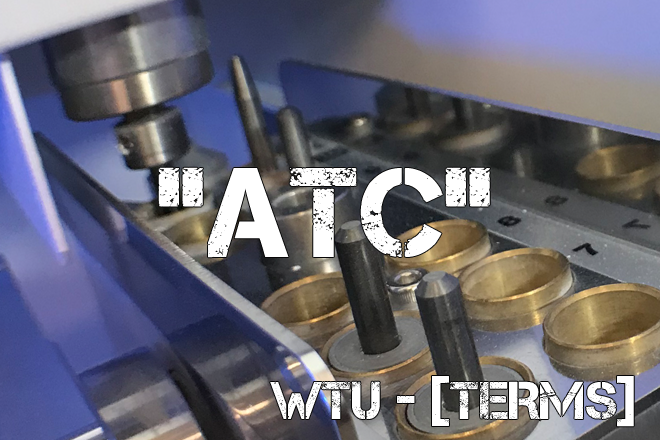
What is “ATC”?
“ATC” stands for “Automatic Tool Changer”. This one might seem a bit self-explanatory, but it shouldn’t go unappreciated. An ATC is vital to the modern dental milling workflow. An ATC is responsible for picking up and measuring the correct tool for a given milling program. ATC’s simplify the milling process substantially. Without one, each tool change would need to be done manually. Milling times would be long and there would be much more chance for human error. With one, the milling process is automated down to a very simple level: Push a button, get a crown.
Interesting Details about “ATC”
-
Why do we need an ATC?
To achieve the fit, finish, and accuracy we demand from our milling machines we need to use more than one tool. Milling processes used today start with a large roughing tool then work down to a smaller detail tool to do the finishing. Because of this, we need to change tools mid-program using an ATC.
-
Tool change time is a big part of your mill time.
If you’ve ever sat and watched your machine mill, you’ll notice that the tool change time can add up. Some machines can take more than a minute to change a tool. Keep this in mind when you’re balancing mill time and finish detail. The more tools you add to the milling process, the longer it will take. If you’re after fast mill times, it may make sense to remove the final detail (usually 0.6 or 0.3mm) tool to save time.
-
There are two types of ATC’s: pneumatic and electric.
They differ in the way they open and close the collet to pick up the tool. Pneumatic systems use compressed air and electric systems use an external motor. Some of the machines that use pneumatic systems are Imes-Icore, VHF, and Axsys. The most popular system using an electric ATC is are Roland’s DWX series. Both types achieve reliable results.
-
Parts of an ATC system:
- Collet: This is the part that opens and closed to hold the tool in the spindle. It’s a very important part of the milling system. More on collets HERE.
- Drawbar: This is a bar inside the spindle that is attached to the collet. It moves the collet in and out of the spindle while riding on the collet’s tapered surface. This action is converted into clamping force at the collet.
- Measuring Switch: The mechanism used to measure the tool’s vertical position in the collet. Once the tool has been clamped into the collet, the machine will measure the tool’s tip on a known surface. This registers the tools length in the machine and enables it to mill accurate parts.
-
Having occlusion fit issues?
It might be your tool measuring switch. Every time the tool is picked up its length is different relative to the collet. The machine needs to know where the tools‘s tip is to mill accurate occlusions. A buggy tool switch can certainly cause high or low occlusions. To test this, mill the same design several times and see if the fit changes. If it does, you might want to contact your support supplier to investigate.
Thanks for reading! We hope this break down of the term “ATC” has been of value. Stay tuned next week for another post like this!
Check out the growing list of WeTeamUp Terms posts HERE

